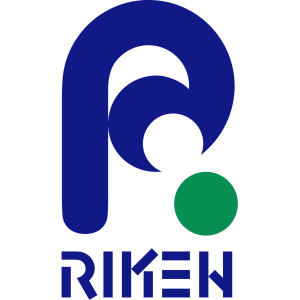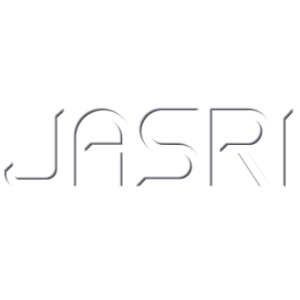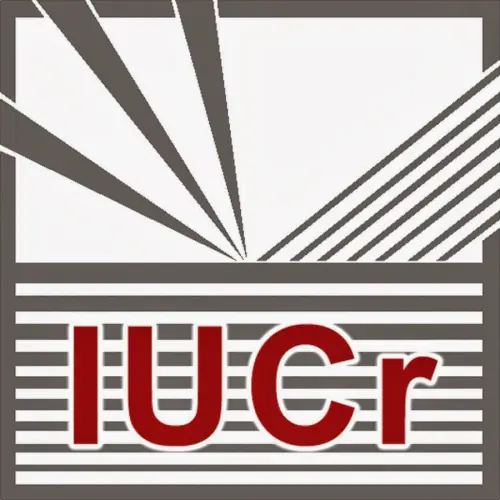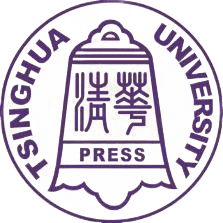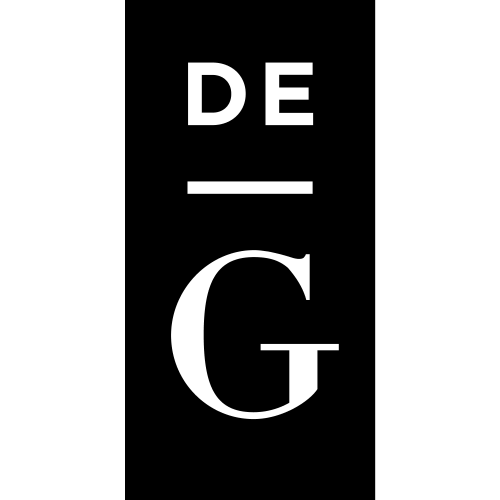Open Access


Nature Communications, volume 4, issue 1, publication number 2229
The origin of antiferroelectricity in PbZrO3
A. K. Tagantsev
1, 2
,
K. Vaideeswaran
1
,
S. B. Vakhrushev
2, 3
,
A. V. Filimonov
3
,
R. G. Burkovsky
3, 4
,
A. Shaganov
3
,
D Andronikova
3
,
A. I. Rudskoy
3
,
A. Q. R. Baron
5
,
H. Uchiyama
5
,
D. Chernyshov
6
,
A. Bosak
4
,
Z. Ujma
7
,
K. Roleder
7
,
A. MAJCHROWSKI
8
,
J.-H. Ko
9
,
N. Setter
1
1
3
5
7
Institute of Physics, University of Silesia, ul. Uniwersytecka 4, 40-007 Katowice, Poland,
|
8
Publication type: Journal Article
Publication date: 2013-07-29
Journal:
Nature Communications
Quartile SCImago
Q1
Quartile WOS
Q1
Impact factor: 16.6
ISSN: 20411723, 20411723
General Chemistry
General Biochemistry, Genetics and Molecular Biology
General Physics and Astronomy
Abstract
Antiferroelectrics are essential ingredients for the widely applied piezoelectric and ferroelectric materials: the most common ferroelectric, lead zirconate titanate is an alloy of the ferroelectric lead titanate and the antiferroelectric lead zirconate. Antiferroelectrics themselves are useful in large digital displacement transducers and energy-storage capacitors. Despite their technological importance, the reason why materials become antiferroelectric has remained allusive since their first discovery. Here we report the results of a study on the lattice dynamics of the antiferroelectric lead zirconate using inelastic and diffuse X-ray scattering techniques and the Brillouin light scattering. The analysis of the results reveals that the antiferroelectric state is a ‘missed’ incommensurate phase, and that the paraelectric to antiferroelectric phase transition is driven by the softening of a single lattice mode via flexoelectric coupling. These findings resolve the mystery of the origin of antiferroelectricity in lead zirconate and suggest an approach to the treatment of complex phase transitions in ferroics. Although antiferroelectric lead zirconate is a principal component in the most widely used piezoelectric ceramics, the nature of its antiferroelectricticity has been unclear. Here Tagantsevet al.reveal how this phenomenon arises from the softening of a single lattice mode.
Top-30
Journals
|
5
10
15
20
25
30
35
40
45
|
|
|
Physical Review B
45 publications, 17.05%
|
|
|
Journal of Applied Physics
10 publications, 3.79%
|
|
|
Applied Physics Letters
9 publications, 3.41%
|
|
|
Nature Communications
9 publications, 3.41%
|
|
|
Phase Transitions
9 publications, 3.41%
|
|
|
Physical Review Letters
7 publications, 2.65%
|
|
|
Journal of the American Ceramic Society
7 publications, 2.65%
|
|
|
Journal of Physics Condensed Matter
6 publications, 2.27%
|
|
|
Materials
5 publications, 1.89%
|
|
|
Acta Materialia
5 publications, 1.89%
|
|
|
Ceramics International
5 publications, 1.89%
|
|
|
Physics of the Solid State
5 publications, 1.89%
|
|
|
Physical Review Materials
4 publications, 1.52%
|
|
|
Scientific Reports
4 publications, 1.52%
|
|
|
Journal of Alloys and Compounds
4 publications, 1.52%
|
|
|
Journal of the European Ceramic Society
4 publications, 1.52%
|
|
|
Advanced Materials
4 publications, 1.52%
|
|
|
Journal of Materials Chemistry C
4 publications, 1.52%
|
|
|
Ferroelectrics
4 publications, 1.52%
|
|
|
Nano Letters
3 publications, 1.14%
|
|
|
Physical Review Applied
3 publications, 1.14%
|
|
|
Thin Solid Films
3 publications, 1.14%
|
|
|
Advanced Functional Materials
3 publications, 1.14%
|
|
|
Physica Status Solidi (A) Applications and Materials Science
3 publications, 1.14%
|
|
|
Journal of Advanced Dielectrics
2 publications, 0.76%
|
|
|
AIP Advances
2 publications, 0.76%
|
|
|
Acta Crystallographica Section B: Structural Science, Crystal Engineering and Materials
2 publications, 0.76%
|
|
|
Journal of Advanced Ceramics
2 publications, 0.76%
|
|
|
npj Computational Materials
2 publications, 0.76%
|
|
|
5
10
15
20
25
30
35
40
45
|
Publishers
|
10
20
30
40
50
60
70
|
|
|
American Physical Society (APS)
61 publications, 23.11%
|
|
|
Elsevier
40 publications, 15.15%
|
|
|
Wiley
27 publications, 10.23%
|
|
|
American Institute of Physics (AIP)
25 publications, 9.47%
|
|
|
Springer Nature
20 publications, 7.58%
|
|
|
Taylor & Francis
15 publications, 5.68%
|
|
|
American Chemical Society (ACS)
12 publications, 4.55%
|
|
|
IOP Publishing
12 publications, 4.55%
|
|
|
Royal Society of Chemistry (RSC)
12 publications, 4.55%
|
|
|
Pleiades Publishing
6 publications, 2.27%
|
|
|
Multidisciplinary Digital Publishing Institute (MDPI)
5 publications, 1.89%
|
|
|
World Scientific
3 publications, 1.14%
|
|
|
International Union of Crystallography (IUCr)
3 publications, 1.14%
|
|
|
Japan Society of Applied Physics
3 publications, 1.14%
|
|
|
American Association for the Advancement of Science (AAAS)
3 publications, 1.14%
|
|
|
Tsinghua University Press
2 publications, 0.76%
|
|
|
Chinese Ceramic Society
2 publications, 0.76%
|
|
|
Chinese Physical Society
2 publications, 0.76%
|
|
|
Cambridge University Press
1 publication, 0.38%
|
|
|
Walter de Gruyter
1 publication, 0.38%
|
|
|
Trans Tech Publications
1 publication, 0.38%
|
|
|
Proceedings of the National Academy of Sciences (PNAS)
1 publication, 0.38%
|
|
|
Annual Reviews
1 publication, 0.38%
|
|
|
OAE Publishing Inc.
1 publication, 0.38%
|
|
|
10
20
30
40
50
60
70
|
- We do not take into account publications without a DOI.
- Statistics recalculated only for publications connected to researchers, organizations and labs registered on the platform.
- Statistics recalculated weekly.
Are you a researcher?
Create a profile to get free access to personal recommendations for colleagues and new articles.
Metrics
Cite this
GOST |
RIS |
BibTex
Cite this
GOST
Copy
Tagantsev A. K. et al. The origin of antiferroelectricity in PbZrO3 // Nature Communications. 2013. Vol. 4. No. 1. 2229
GOST all authors (up to 50)
Copy
Tagantsev A. K., Vaideeswaran K., Vakhrushev S. B., Filimonov A. V., Burkovsky R. G., Shaganov A., Andronikova D., Rudskoy A. I., Baron A. Q. R., Uchiyama H., Chernyshov D., Bosak A., Ujma Z., Roleder K., MAJCHROWSKI A., Ko J., Setter N. The origin of antiferroelectricity in PbZrO3 // Nature Communications. 2013. Vol. 4. No. 1. 2229
Cite this
RIS
Copy
TY - JOUR
DO - 10.1038/ncomms3229
UR - https://doi.org/10.1038/ncomms3229
TI - The origin of antiferroelectricity in PbZrO3
T2 - Nature Communications
AU - Tagantsev, A. K.
AU - Vaideeswaran, K.
AU - Vakhrushev, S. B.
AU - Filimonov, A. V.
AU - Burkovsky, R. G.
AU - Shaganov, A.
AU - Andronikova, D
AU - Rudskoy, A. I.
AU - Baron, A. Q. R.
AU - Uchiyama, H.
AU - Chernyshov, D.
AU - Bosak, A.
AU - Ujma, Z.
AU - Roleder, K.
AU - MAJCHROWSKI, A.
AU - Ko, J.-H.
AU - Setter, N.
PY - 2013
DA - 2013/07/29
PB - Springer Nature
IS - 1
VL - 4
SN - 2041-1723
SN - 2041-1723
ER -
Cite this
BibTex
Copy
@article{2013_Tagantsev,
author = {A. K. Tagantsev and K. Vaideeswaran and S. B. Vakhrushev and A. V. Filimonov and R. G. Burkovsky and A. Shaganov and D Andronikova and A. I. Rudskoy and A. Q. R. Baron and H. Uchiyama and D. Chernyshov and A. Bosak and Z. Ujma and K. Roleder and A. MAJCHROWSKI and J.-H. Ko and N. Setter},
title = {The origin of antiferroelectricity in PbZrO3},
journal = {Nature Communications},
year = {2013},
volume = {4},
publisher = {Springer Nature},
month = {jul},
url = {https://doi.org/10.1038/ncomms3229},
number = {1},
doi = {10.1038/ncomms3229}
}


